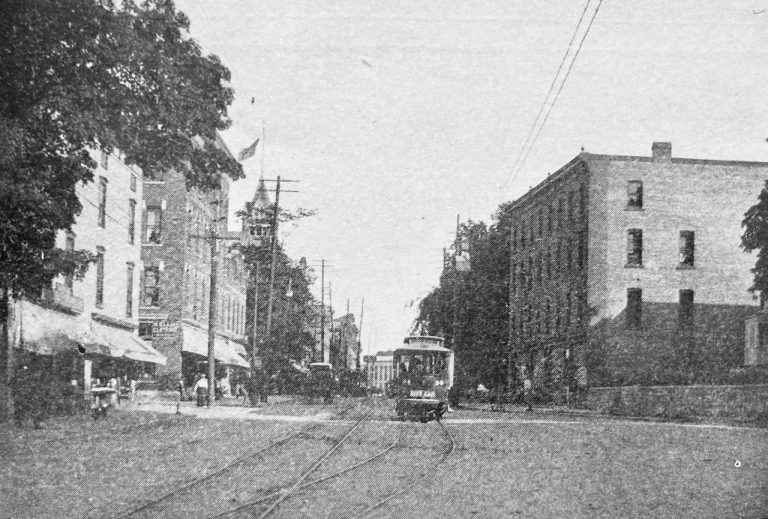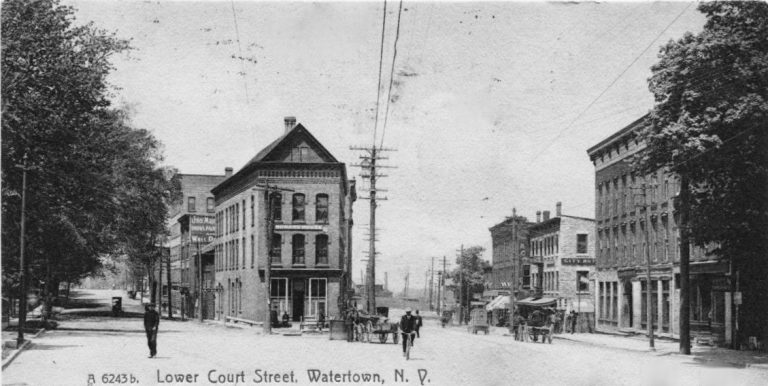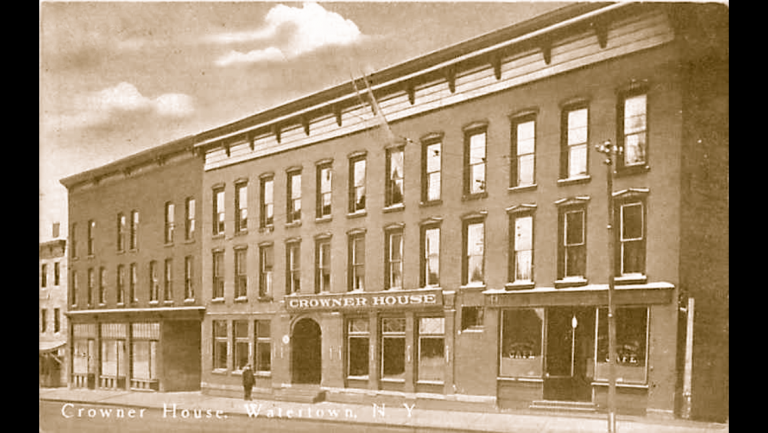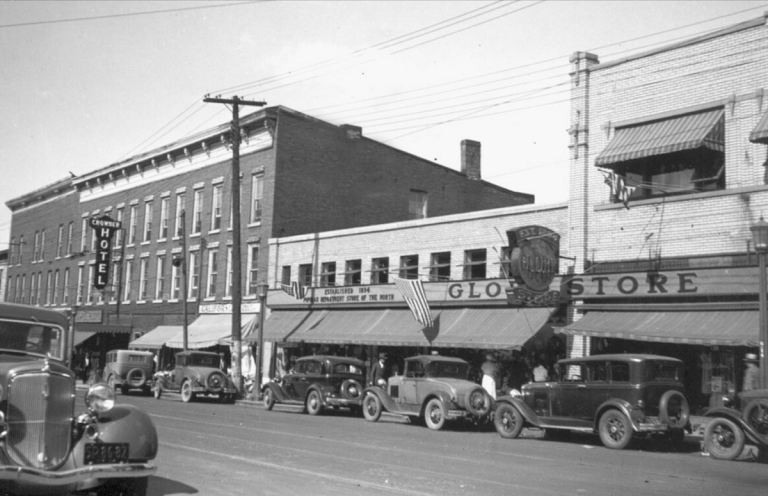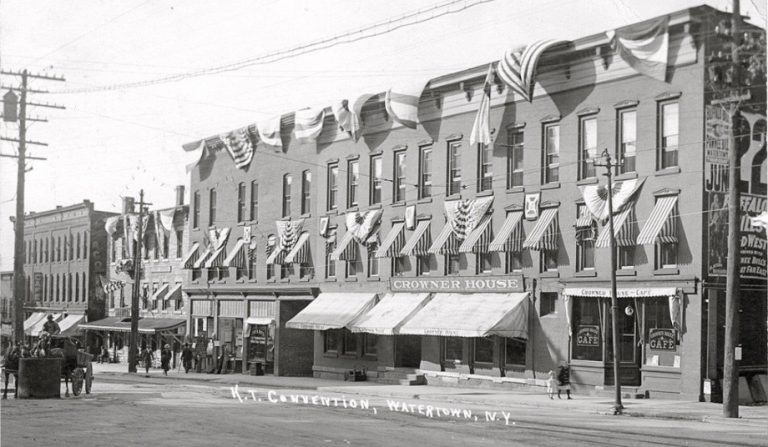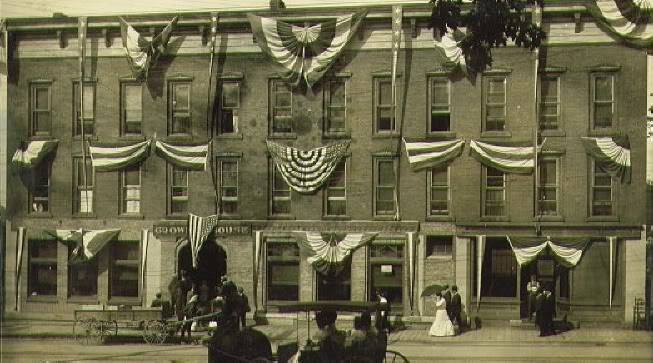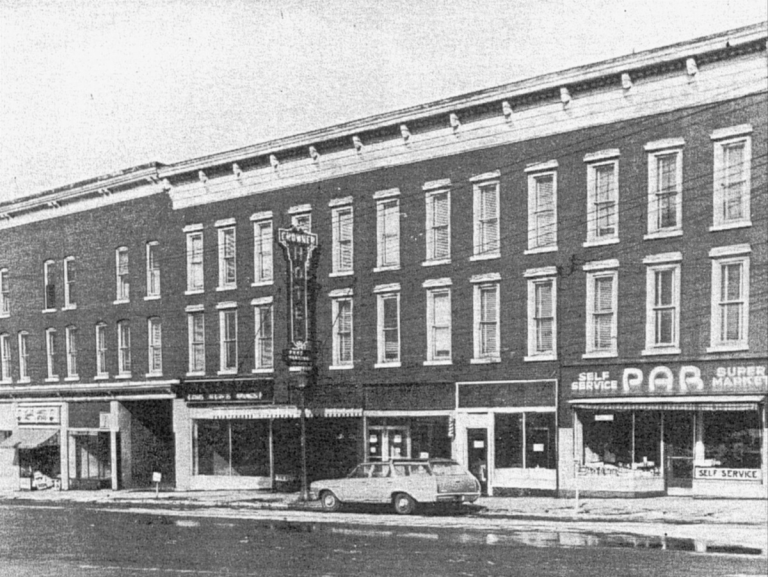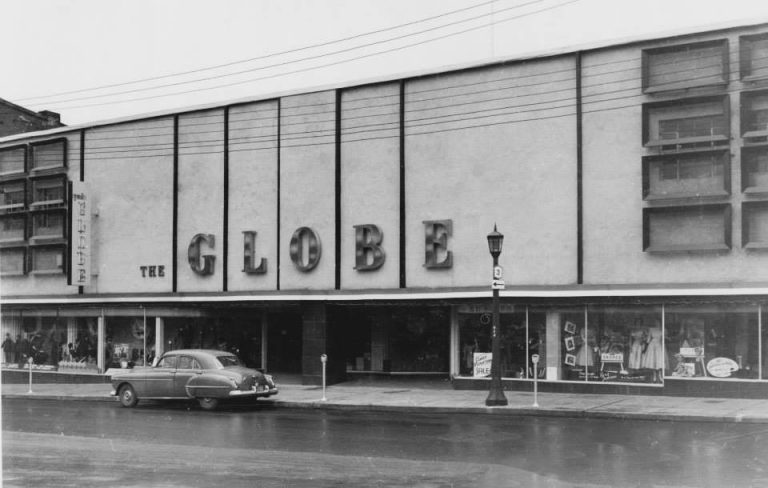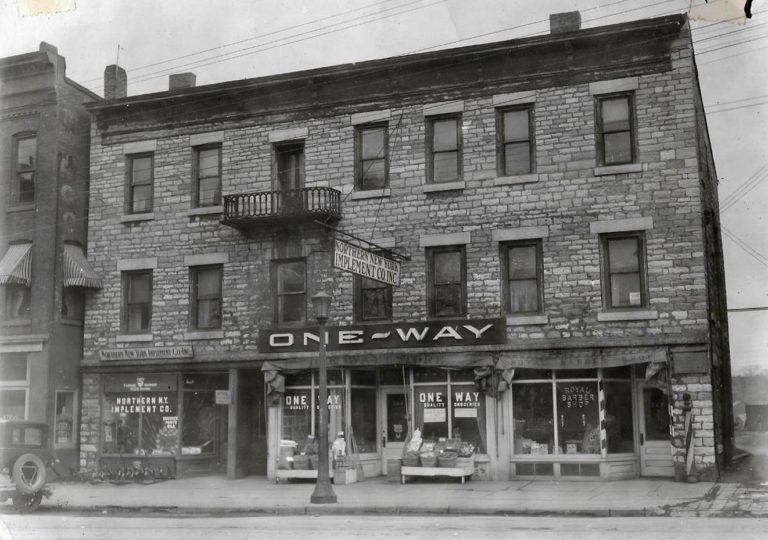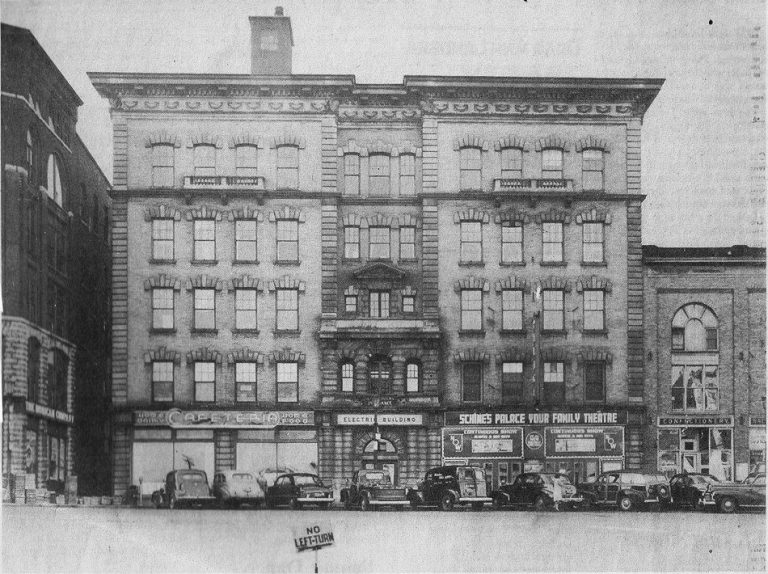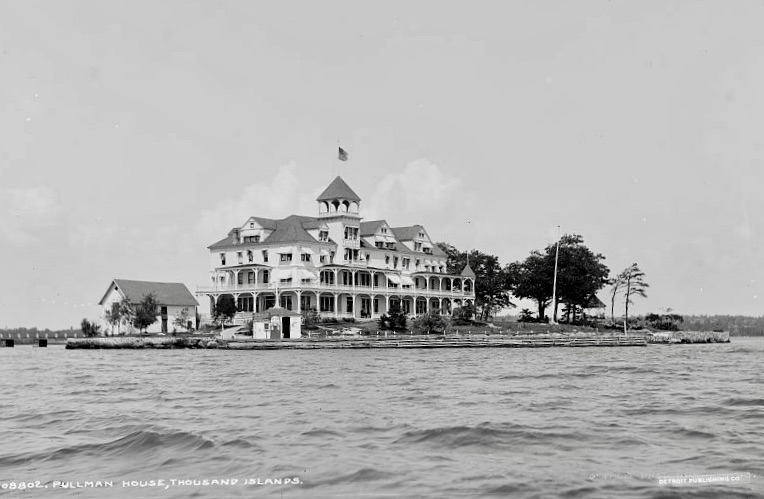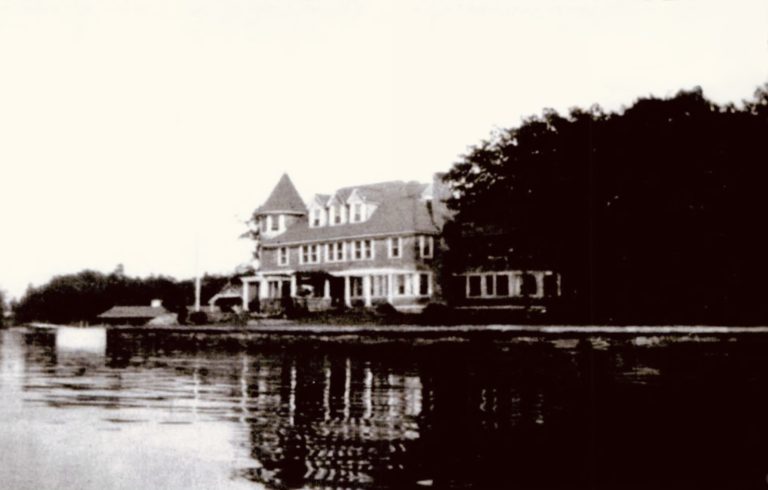The Crowner House, Another Otis Wheelock Creation In Watertown, N.Y.
One individual who had his hand in many of Watertown, N.Y.’s architectural achievements through the centuries is Otis Wheelock. The Crowner House, built for John D. Crowner, is yet another one of his hotel works, alongside The Woodruff, a mere five years apart no less, for the busy Wheelock (notice in the photo below the arched entryway, which was also used for the Woodruff Hotel but lost in renovations over the years. The current Woodruff Professional Building pays tribute to its namesake by incorporating the same arch into its design.)
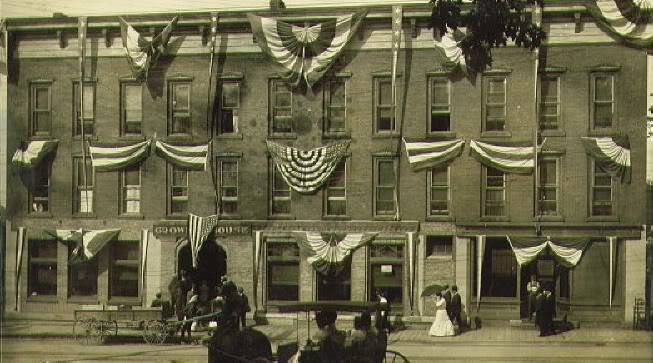
Other businesses and buildings neighboring the Crowner House included the Globe Store, the Kaiser Block, which housed the Green Lantern Restaurant, and the City Hotel, home to the Royal Barbershop. In later years, the Crowner House would also become home to the Par Super Market, the second one in the city, with the other being located on Mill St.
John Haddock would note in his historical account of Jefferson County in 1894’s The Growth of a Century–
Though far more modern (than the Oakland House), the Crowner House, on Court Street, is a well-known and always popular public house. The Wilder Brothers (George and Solon) are proprietors, and give personal attention to the business. By its door must necessarily pass all the teams that come to the city over the lower (Court St) bridge. Its character as a good, moderate-priced hotel has been well established for so long a time that its patronage has increased from year to year. Under its present (1890s) management it is better than ever.
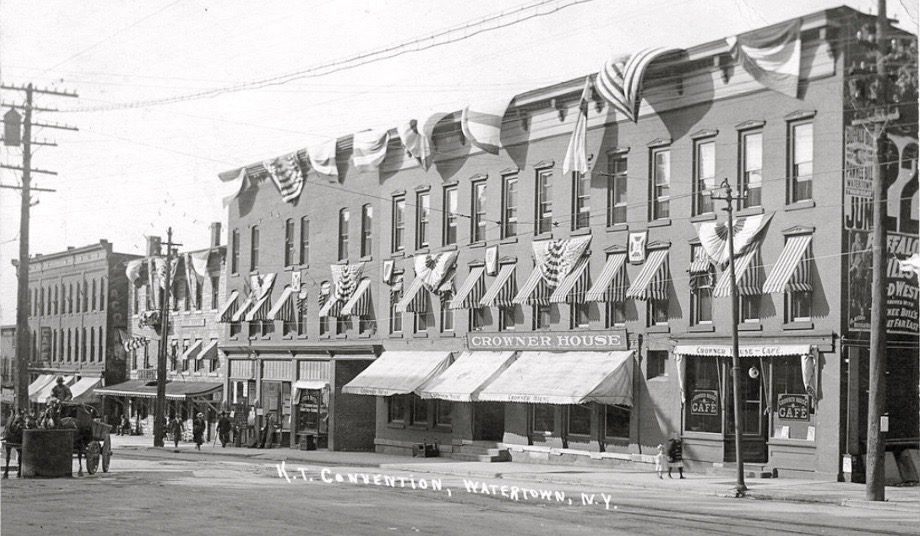
In 1905, there were plans to add another floor to the Crowner House, but there was a lack of availability of bricks and ultimately, the work was never done. In 1910, the Crowner House would see a number of improvements made, including the enlargement of its dining room and “a beautiful steel ceiling and paneled steel wainscoting,” according to the Daily Times.
While the Crowner House would enjoy a fine reputation in its early days, the area that it was located in became known as Watertown’s “Red Light” district, with everything from prostitution, to bar brawls, and murder. With such nearby bars as Bucket of Blood and the Pig’s Ear, it’s good that the Jefferson Count Jail wasn’t too far up the street.
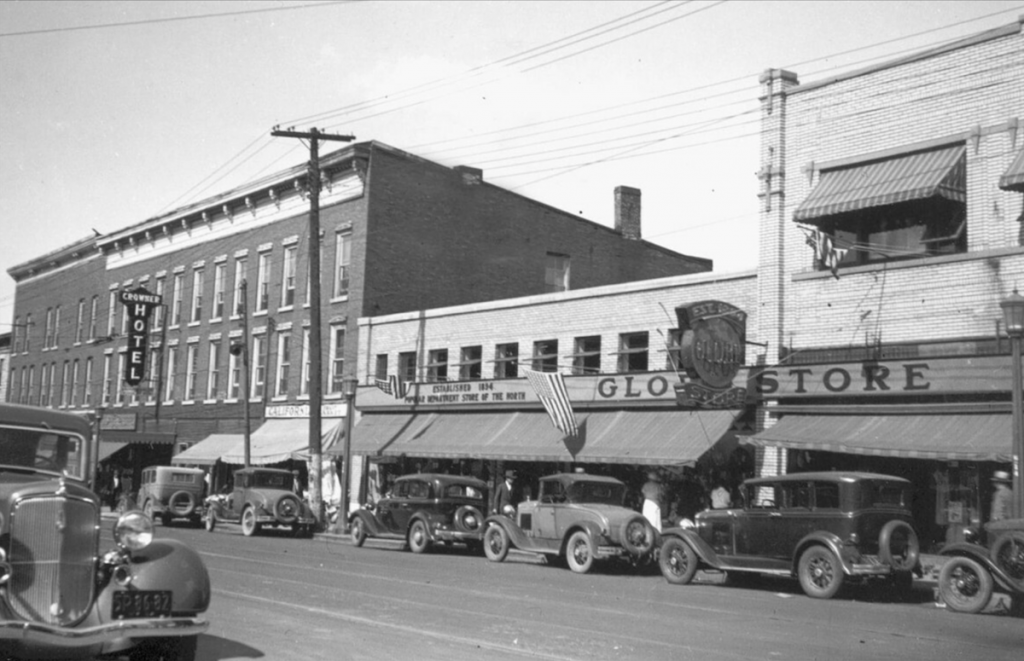
The Daily Times would note one such incident on March 11, 1901, with the headline “Midnight Drunken Brawl”, “Tom Tracy Strikes An Italian And Gets A Knife Thrust,” and “Lower Court Street Maintains Its Record”–
A row occurred on Court Street, At 11:30 Saturday night which still further emphasizes the general unattractiveness of that thoroughfare after nightfall. Some Italians and some others were mixed up in a brawl which lead to some arrests. A knife figured in the melee though no serious results came from it.
The Italians went down Court Street, followed by a crowd of about 15 who reviled them and addressed them in insulting terms. The Italians stopped with their backs against a wall, just before reaching the Crowner House, to let their tormentors go by. The crowd stopped and Tracy stepped forward and hit Vincenzo Rosetti in the eye.
The melee wouldn’t progress much further before Officer Kilborn and Sergeant Singleton happened along to make some arrests.
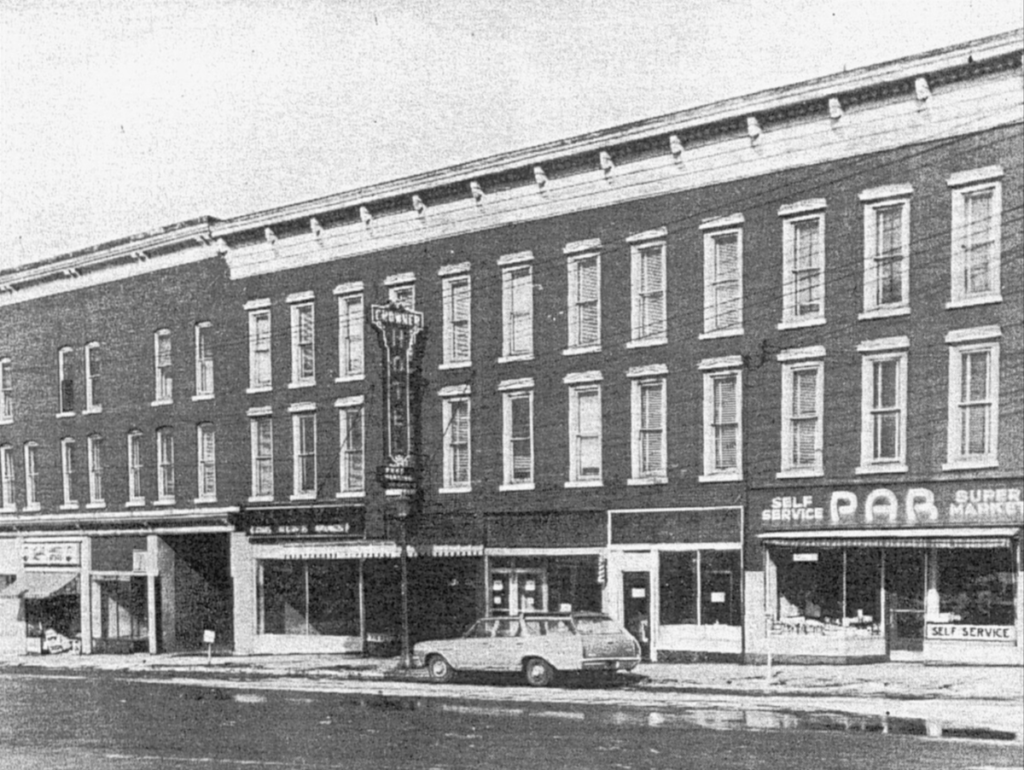
The Daily Times would note the impending “End of a Legend” in a 1965 piece looking at the Crowner House history before its demolition as part of urban renewal the following year–
More political schemes have been hatched, more farms bought and sold and more horse trades consummated in the old lobby of the Crowner House than in any other spot in Jefferson County, some observers believe.
Now the lobby of the old Crowner hotel is unearthly quiet–the horses and farms of a bygone agricultural heyday are no longer exchanged, the voices of men who negotiated the political schemes have long been unheard.
Soon, the Crowner Hotel–following the precedent of two earlier Watertown hotels, the Oakland House and the City Hotel–will be only a name on a yellowed page–the only remainder of a colorful past and a now extinct way of life. Urban renewal will soon bring down the old hotel.
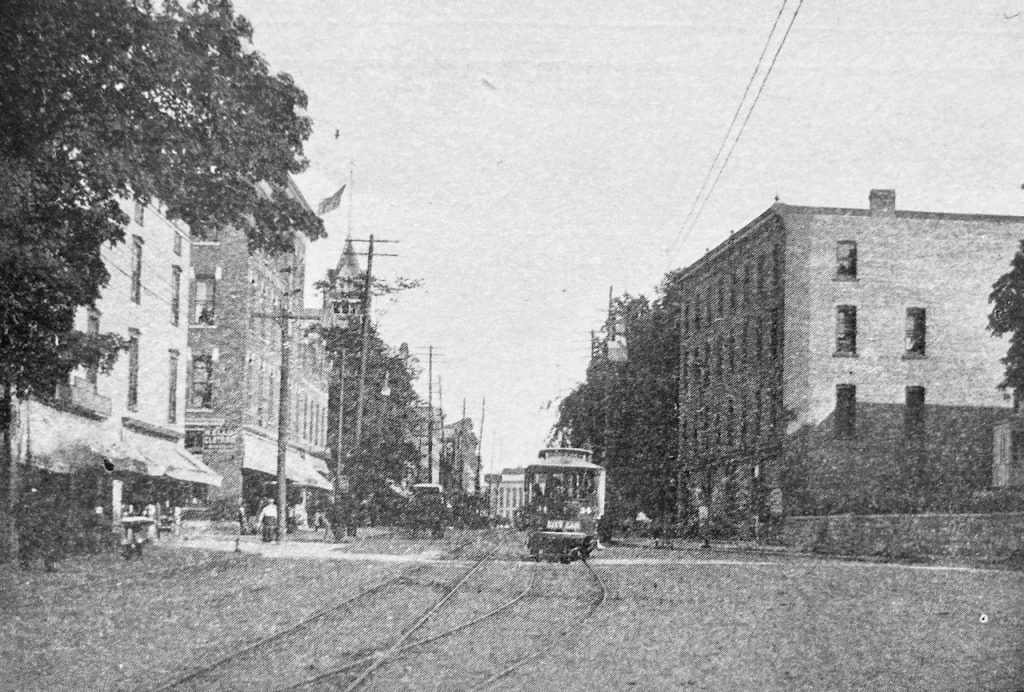
The article would go on to note that, up until ten years prior (1955), the 74-room hotel did moderate business. A number of factors, including automobile travel, the interstate, and “its subsequent ‘child,’ the motel,” had reduced the Crowner House to a “very, very quiet place.”

